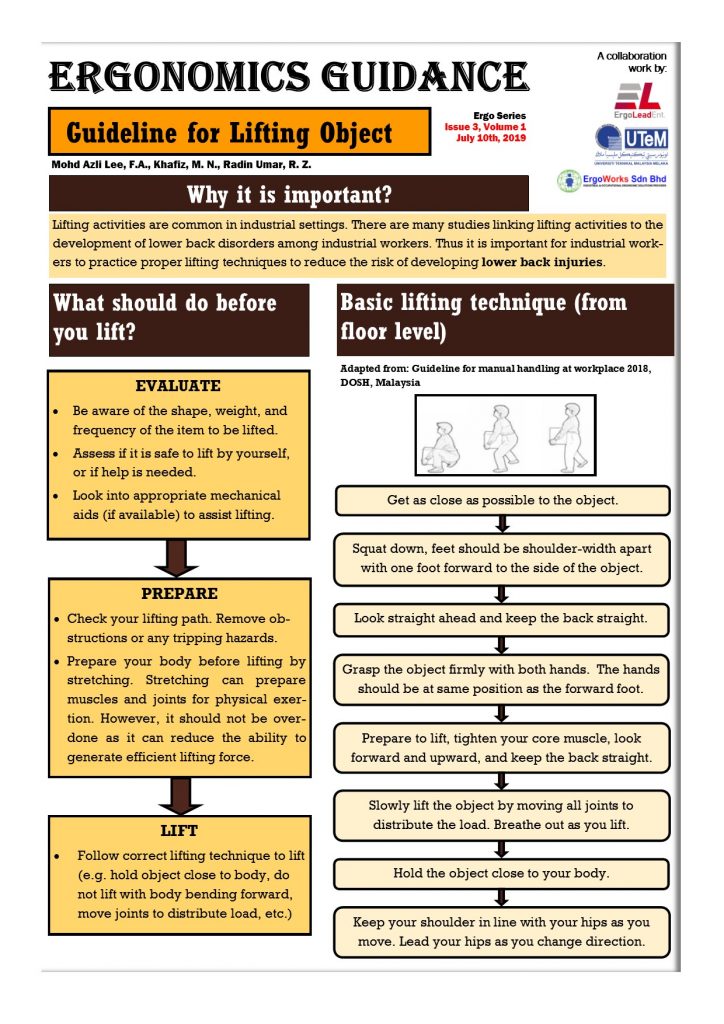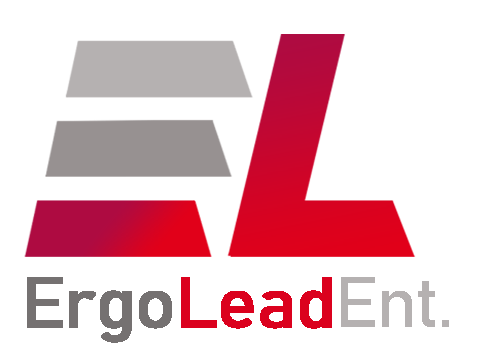
Ergo Series [Issue 3, Volume 1]
Ergonomics is not all about tools and mechanical equipment. Work habit, such as proper lifting method, is also crucial to improve your body posture and the way your body exert force.
Good lifting technique is not only compulsory at work but also in your casual, daily activities. Adopt these steps when performing lifting activities and experience better spine health!
Why good lifting technique is important?
Lifting activities are common in industrial settings. There are many studies linking lifting activities to the development of lower back disorders among industrial workers. Thus it is important for industrial workers to practice proper lifting techniques to reduce the risk of developing lower back injuries.
What should you do before you lift?
- Be aware of the shape, weight, and frequency of the item to be lifted.
- Assess if it is safe to lift by yourself, or if help is needed.
- Look into appropriate mechanical aids (if available) to assist lifting.
- Check your lifting path. Remove obstructions or any tripping hazards.
- Prepare your body before lifting by stretching. Stretching can prepare muscles and joints for physical exertion. However, it should not be overdone as it can reduce the ability to generate efficient lifting force.
- Follow correct lifting technique to lift (e.g. hold object close to body, do not lift with body bending forward, move joints to distribute load, etc.).
Basic lifting technique (from floor level).

- Get as close as possible to the object.
- Squat down, feet should be shoulder-width apart with one foot forward to the side of the object.
- Look straight ahead and keep the back straight.
- Grasp the object firmly with both hands. The hands should be at same position as the forward foot.
- Prepare to lift, tighten your core muscle, look forward and upward, and keep the back straight.
- Slowly lift the object by moving all joints to distribute the load. Breathe out as you lift.
- Hold the object close to your body.
- Keep your shoulder in line with your hips as you move. Lead your hips as you change direction.
*Adapted from: Guideline for Manual Handling at Workplace, 2018, DOSH, Malaysia.
